Jean Renoir arrived in America for the first time on New Year’s Eve 1940 on an American liner sailing from Lisbon to New York. He swiftly left the Big Apple for Sunset Boulevard and by the middle of January had been signed to a contract with 20th Century-Fox. It wasn’t until the end of May however, after having had a series of ideas for stories rejected, that Renoir was able to begin on his first American film Swamp Water, scripted by Dudley Nichols and based on a novel by Vereen Bell.
Despite having been relatively forgotten even in relation to Renoir’s American oeuvre Swamp Water, while at times frustrating, is ultimately impressive. It tells of the vast Okeefenokee swampland of Georgia and focuses on young Ben Ragan’s (Dana Andrews) encounter with Tom Keefer (Walter Brennan) an accused murderer who has been hiding out in the swamp for years. Particularly strong is the film’s use of depth photography in its location shooting of Okeefenokee as well as in some key dramatic scenes.
Likewise of interest is the film’s attempt to get at the accent of the American South, which, while possibly not in itself immensely researched, nonetheless feels accurate, with performances aided by the script’s strong sense of linguistic authenticity. The script also contains some sharp comic moments, a good example being Ben Ragan and Keefer’s daughter Julie’s (Anne Baxter) first romantic encounter, in which Ben tells Julie that “You’re a heap prettier than Mabel is, if you was a little bigger” to which Julie responds, “I could grow more maybe!”
In this piece I will focus, however, on the film’s central story, which on the surface might appear fairly melodramatic and apolitical and has indeed generally been received this way. Although Swamp Water was assigned to Renoir, rather than chosen by him, it nevertheless was of interest to the director who commented that, “it is still something to be able to direct a film with a story that is not completely idiotic.” Screenwriter Dudley Nichols was an established figure and had worked throughout his career with such directors as John Ford, Howard Hawks and Fritz Lang. Renoir and Nichols got along very well, no doubt not in small part due to the fact that Nichols’ previous experience with these directors must have left him very open to possible revisions of his work. I will argue here that while on the surface Swamp Water appears to be an escapist drama, it has a political subtext that touches at once on issues both of the American South and of the Europe that Renoir had recently escaped.
A key example of a theme in Nichols’ script that appears to have been worked on by Renoir is that of humans as being not dissimilar to animals. For example, Ben like his dog is an adventurer who gets easily lost, while Julie like her kittens is small but bites when threatened.
There is nothing in the film’s narrative or script, however, that could be seen to have prompted the decision to have Tom Keefer horizontally creep up on Ben the first time we see him, paralleling him with the alligators that haunt the swamplands; this seems likely to be Renoir’s image.
And the choice that Julie remain silent for a long-time into the film (which incidentally is perfect for Baxter’s acting, which is of a high-emotional tenor) and have wild hair and a wide-eyed performance, all seem to extend her appearance as a cat beyond those expressed on the page.
These images of Ben and Julie are undoubtedly fairly romantic and arguably mildly condescending towards the real people of small-towns in America. Indeed Renoir was close friends with Robert Flaherty, who arranged for Renoir’s journey to America; and Flaherty had made the famously condescending ethnographic documentary of the Inuits, Nanook of the North (1922.) And Renoir said of Georgia that it was “an old country, very primitive, with peasants who remind me of the inhabitants of very isolated corners of Brittany” and that “the families have no idea of quitting their wooden farmhouses. The tree which shades the porch has been planted by some ancestor.” (1)
On closer inspection, however, this theme is a little more complex than it first appears, since beneath the surface of this more romantic animal imagery there is also the image of the hunt. The brutality of rabbit hunting had been central to Renoir’s previous film La Regle du Jeu (1939), a symbol of human brutality: as a man is killed we are shown a close up of a rabbit being shot. In both films the hunt is presented as a social convention upholding bourgeois society’s cruel and arbitrary rules. In Swamp Water the culmination of Ben’s ostracism from his community is represented in his no longer being allowed to hunt foxes alongside his neighbours. But the villagers’ hunt can also be paralleled to their blood-thirsty desire to catch Tom Keefer and have him hanged.
In this respect Swamp Water can be considered a film about the lynch-mob mentality, following on from Fritz Lang’s fairly recent film for MGM on the subject, equally with an all-white cast, Fury (1936.) Seen this way Swamp Water’s opening image of a skull sitting on the top of a cross in the centre of the river which is a marker to help guide people through the river, can also be considered as suggesting that the film can be read as a Christian allegory of Jesus’ unjust crucifixion.
Considering the setting of Georgia it is strange that this film has no black characters (and very few black extras.) It is possibly the case that, just as with Lang’s film, it was thought that too overt reference to race could be dangerous. (2)
Despite this, however, Tom’s daughter Julie, while literally white, could certainly pass symbolically as black. Indeed her reputation in the village has been blackened by her father’s name and she is treated as inferior, forced to take on the role of live-in maid, one that in Hollywood cinema is traditionally taken by a black character. Equally when Ben takes her to a ball the community are surprised and while she receives some compliments the family for which she works disapprove, which is certainly suggestive of the racial issue of segregation.
A final image that suggests the racial allegory in the film is the quite blatant fact that despite Ben’s dog having the name Trouble he actually does not get Ben directly into trouble. This red herring is similar to the paralleling of Tom with the alligator, whose viciousness turns out not to be in Tom’s nature. In each case there is an overturning of our perceptions of a dangerous “other.” Key here, however, is the fact that these quite central and obvious negations of the danger of “otherness” do not seem to have any direct reference to racism against black people, but are far broader. Clearly this more general space for considering the unfair victimization of some form of “other” makes the film, like Lang’s Fury, equally open to being read as an allegory about the victimization of Jews under the Nazis throughout Europe.
While Swamp Water contains various hints that it is intended as in part racial allegory, most viewers today will probably not notice this and indeed neither would have many at the time of the film’s release. The initial script of Swamp Water was greatly cut by the time the film came together: a memo from Darryl F. Zanuck to Renoir pressing him to hurry the production along notes that the script, “has been cut to 137 pages. Over 45 pages have been removed”. (3) Equally, a key scene that Renoir shot was cut and Zanuck constructed another scene to replace the gap that had now been made in the plot. (4) It seems likely that a closer look at all the elements that didn’t make it into the film’s final cut, if available, along with the various discussions amongst the filmmakers involved in Swamp Water’s production might well yield further political aspects of the film. Nevertheless I would say that something of a political perspective remains in this film, if only in its overt argument against the victimization of an “other” that may well have been recognized by some viewers at the time, if on an unconscious rather than conscious level, as a reflection on the dangers of fascism.
Ben Dooley.
(1) Sesonske, Alexander, ‘Discovering America: Jean Renoir 1941’, Sight and Sound, Autumn 1981, pp. 256-261.
(2) Eisner, Lotte H., Fritz Lang, Da Capo, 1988, p. 164.
(3) Vitanza, Elizabeth, ‘Another Grand Illusion: Jean Renoir’s First Year in America’, The Film Journal, http://www.thefilmjournal.com/issue12/renoir.html
(4) Sesonske.

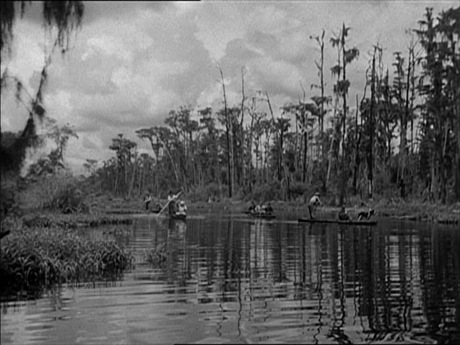


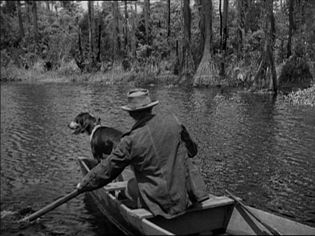
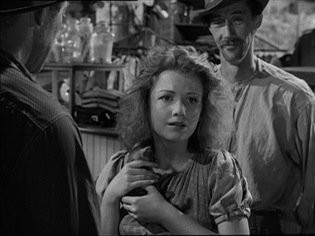
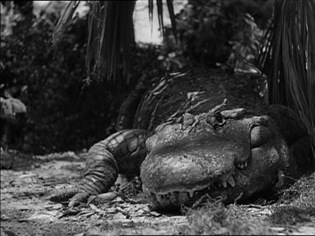
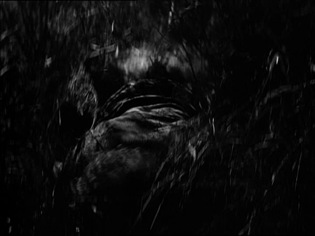

2 comments
Comments feed for this article
January 29, 2013 at 7:12 am
http://tinyurl.com/alltpage04857
“Swamp Water: Renoir�s American Outsider Film � A Year in
the Dark” in fact causes me ponder a little bit more.
I actually cherished each and every individual
section of this post. I appreciate it ,Cecile
July 4, 2013 at 2:17 am
vocamus.net
Awesome post.